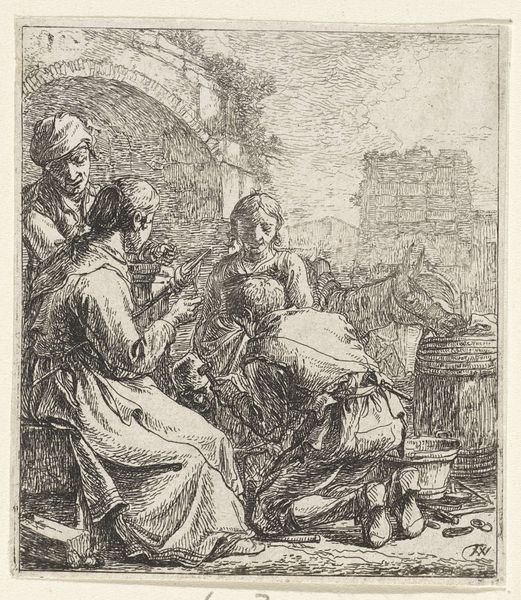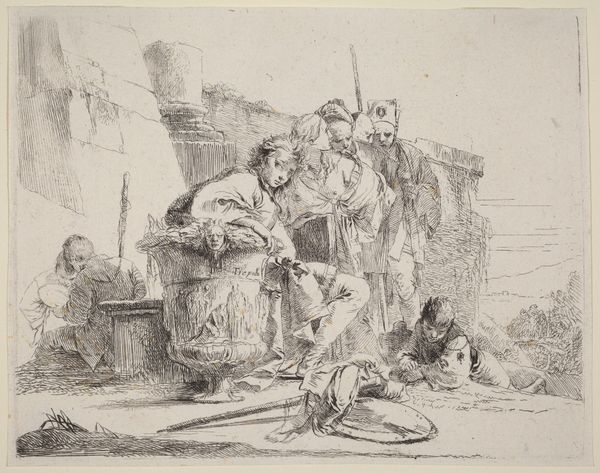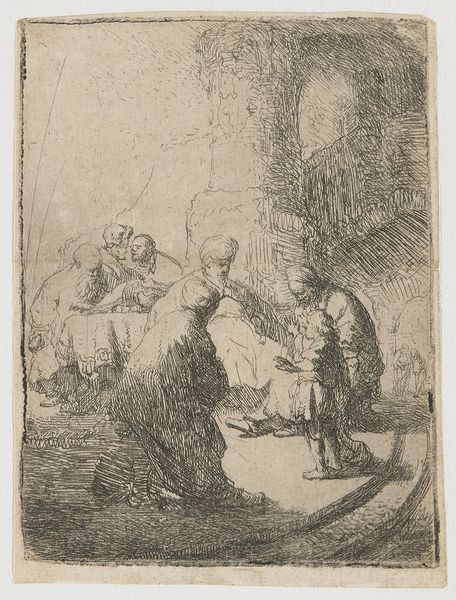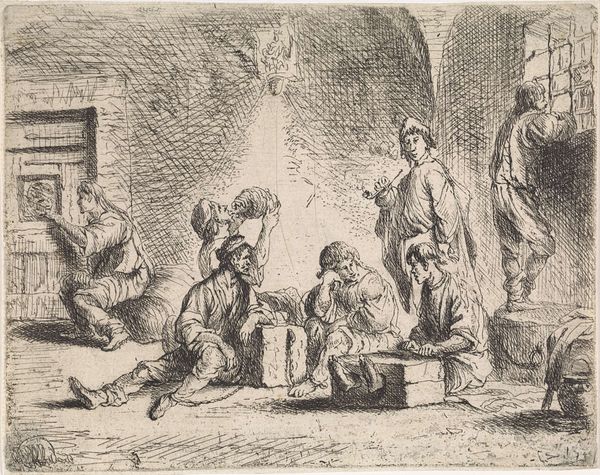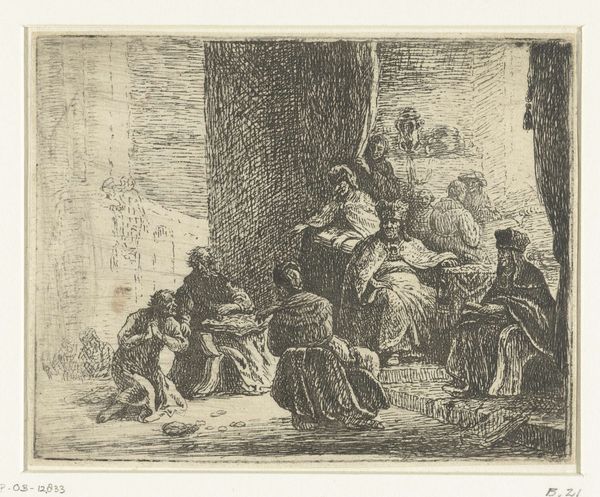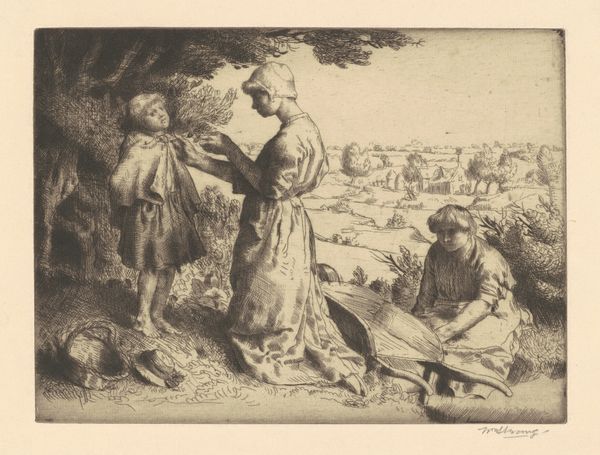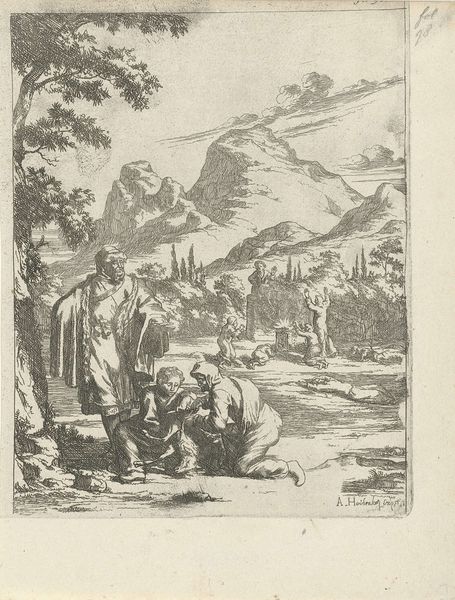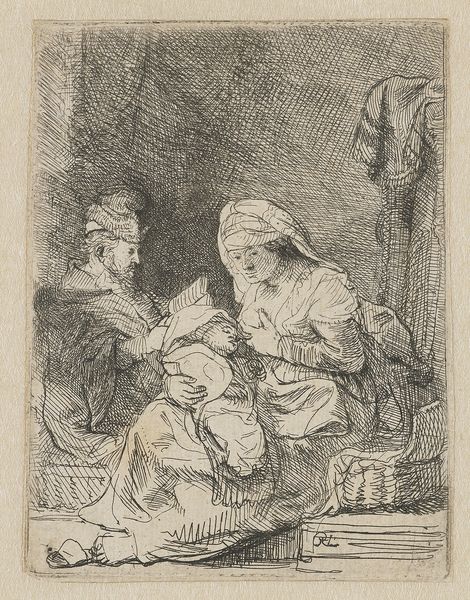
print, etching
#
narrative-art
#
baroque
# print
#
etching
#
history-painting
Dimensions: height 72 mm, width 87 mm
Copyright: Rijks Museum: Open Domain
Curator: Jan Lievens, a Dutch artist from the Baroque period, created this etching, “Christ and the Woman of Samaria,” sometime between 1625 and 1674. It’s currently held here at the Rijksmuseum. Editor: My first impression? It's… conversational. There’s a palpable sense of tension in this simple well-side encounter. The stark lines of the etching style definitely contribute to this. Curator: Precisely. This print captures the biblical episode from the Gospel of John, where Jesus engages a Samaritan woman at Jacob's well. He transcends societal taboos, offering her “living water.” Considering Lievens' artistic development within the cultural context of his time is really central. Editor: It certainly speaks volumes about intersectional issues too. Jesus intentionally breaking down these gendered and racial lines. To me, this reflects broader discourses about the role of women, marginalized communities, and religious hypocrisy. It's very radical. Curator: Absolutely, and we must not neglect the socio-political power dynamics present. The depiction highlights the agency—however circumscribed—of the Samaritan woman who takes this message back to her village. Editor: Do you think Lievens consciously intended to frame it as an act of radical agency, or could that reading be an updated projection onto the past? Perhaps he was focused on depicting piety in a readily legible manner to 17th-century audiences? Curator: It’s undeniable that historical readings change across time, but I see the deliberate choices of the composition emphasizing the moment when power and prejudice start shifting. Note her physical placement adjacent to the well—it speaks to the limitations of her traditional existence. Editor: Well, by considering the artwork within broader art historical and cultural landscapes, we begin to understand how power functions, not just through subject matter, but through institutional structures, patronage and art markets themselves. Lievens did also move in Rembrandts circles, so maybe we are ascribing him a bit too much merit. Curator: I agree that recognizing multiple layers allows a fuller engagement. This print makes visible how art from the past speaks directly into our present social debates. Editor: Yes, reflecting on the past enables us to navigate today’s complexities with both knowledge and a good degree of informed skepticism.
Comments
No comments
Be the first to comment and join the conversation on the ultimate creative platform.


